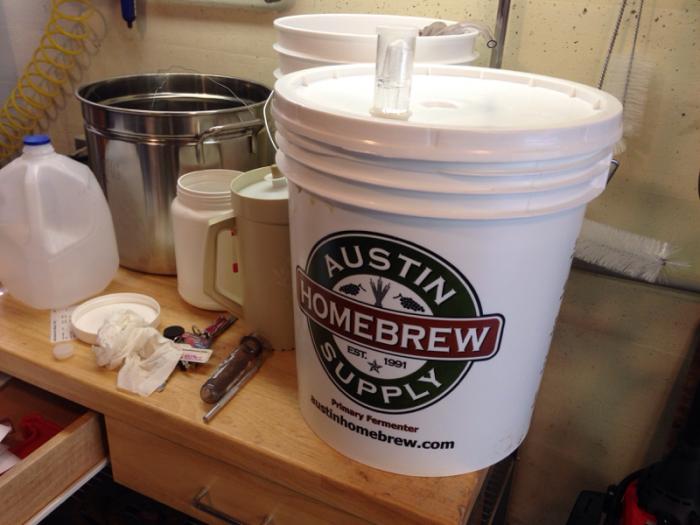p40whk
Well-Known Member
- Joined
- Sep 23, 2013
- Messages
- 131
- Reaction score
- 11
Brewed my first batch yesterday and made a couple of mistakes and after searching through the threads I'm thinking I might be ok but still worry.
I brewed an American wheat from a kit and here's what I did wrong:
1) Threw the whole packet of hops pellets into the boil rather than divide it as the recipe called for. I used a mesh bag for the hops so once I realized my mistake (5 min in), I took some out and re-added it at the specified time, is this going to be an issue?
2) I was instructed to use bag ice to cool my wort from a local brew shop. He said the ice in the bag is sanitary and pure so you carefully cut the bag, dump the contents in your clean and sanitized fermenter and pour the hot wort over the ice to cool it. I'd did this adding more ice than I should and the temp dropped to 63 degrees, I pitched the yeast at this temp., too cold?
3) Forgot to take an OG reading, not worried to much about that from what I've read here.
4) I brought the wort up to 5 gallons using tap water and I realized after that I use a water softener. I only added about 1/2 gallon so will this cause a problem?
I hate being the newb and asking all these questions but I want my first batch to turn out right. Thank for all your help!
I brewed an American wheat from a kit and here's what I did wrong:
1) Threw the whole packet of hops pellets into the boil rather than divide it as the recipe called for. I used a mesh bag for the hops so once I realized my mistake (5 min in), I took some out and re-added it at the specified time, is this going to be an issue?
2) I was instructed to use bag ice to cool my wort from a local brew shop. He said the ice in the bag is sanitary and pure so you carefully cut the bag, dump the contents in your clean and sanitized fermenter and pour the hot wort over the ice to cool it. I'd did this adding more ice than I should and the temp dropped to 63 degrees, I pitched the yeast at this temp., too cold?
3) Forgot to take an OG reading, not worried to much about that from what I've read here.
4) I brought the wort up to 5 gallons using tap water and I realized after that I use a water softener. I only added about 1/2 gallon so will this cause a problem?
I hate being the newb and asking all these questions but I want my first batch to turn out right. Thank for all your help!




